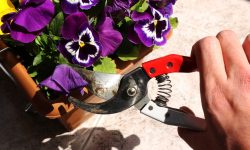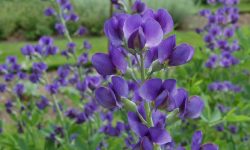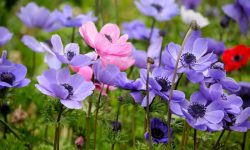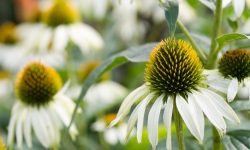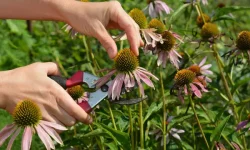Blue Vervain is a striking perennial that brings vibrant purple spikes and graceful texture to any garden. Known for its resilience and long-lasting blooms, this native plant not only enhances visual appeal but also supports pollinators, attracting bees, butterflies, and other beneficial insects. Its upright form and rich color make it a standout addition to perennial borders, wildflower gardens, and naturalized landscapes, offering beauty from early summer through fall.
Caring for Blue Vervain involves understanding its sunlight, soil, and water needs, along with proper pruning, deadheading, and seasonal maintenance. By providing attentive care and thoughtful companion planting, gardeners can enjoy a thriving display of flowers while supporting biodiversity. With the right techniques, Blue Vervain becomes a reliable, low-maintenance perennial, delivering both aesthetic charm and ecological benefits season after season.
Understanding Yarrow
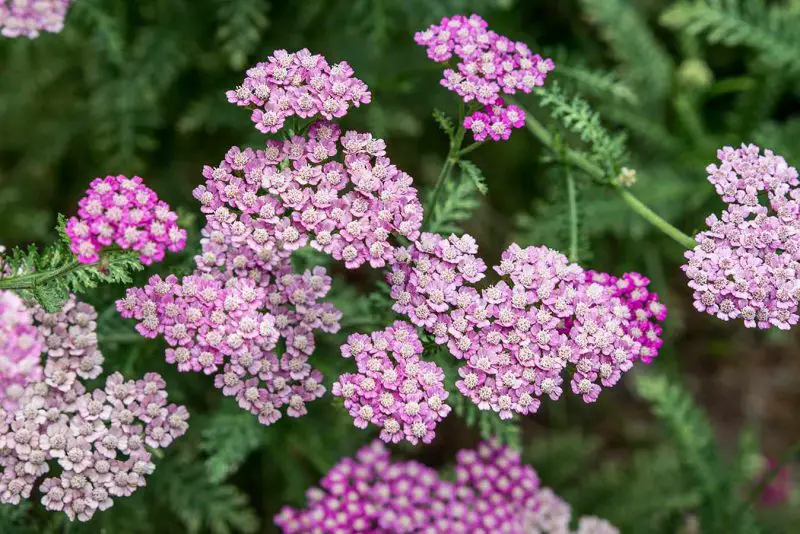
Yarrow is a hardy perennial native to temperate regions of the Northern Hemisphere. It grows in clusters with erect stems ranging from one to three feet in height, topped with flat-topped flower clusters in shades of white, yellow, pink, and red. Its finely divided, feathery foliage adds texture and contrast to garden plantings. Yarrow is highly adaptable, able to thrive in full sun or partial shade, and prefers well-drained soil with moderate fertility. These qualities make it suitable for a wide range of garden styles, from wildflower meadows to formal borders.
Ecologically, yarrow serves as a magnet for pollinators, attracting bees, butterflies, and hoverflies with its rich nectar supply. Additionally, beneficial predatory insects like ladybugs and lacewings often inhabit yarrow, helping to control pests naturally. Its long blooming season ensures a sustained food source for these insects, promoting biodiversity in the garden. Yarrow’s ability to tolerate drought and poor soils also makes it a practical choice for low-maintenance gardens, allowing gardeners to focus on design rather than constant upkeep.
From a gardener’s perspective, understanding yarrow’s growth pattern is essential for proper care. It spreads through both rhizomes and self-seeding, which can be an asset in naturalized areas but may require management in formal beds. Recognizing its seasonal growth cycle, sunlight needs, and water requirements ensures robust plants with extended blooming periods. With this foundational knowledge, gardeners can cultivate yarrow effectively, maximizing its ornamental and ecological benefits throughout the year.
Benefits of Growing Yarrow
Yarrow offers a combination of beauty and functionality in the garden. Its long-lasting blooms add vibrant color and structural interest, enhancing any planting scheme. Flower clusters range from bright white to deep red, providing contrast against the soft green foliage. Because yarrow blooms repeatedly throughout summer and into fall, it maintains visual appeal for an extended period, reducing the need for constant replanting or additional annuals to fill gaps in the garden.
Ecologically, yarrow supports pollinators and beneficial insects. Its nectar attracts bees and butterflies, while ladybugs and lacewings often inhabit the foliage, naturally controlling pests. By planting yarrow, gardeners contribute to a healthier ecosystem and encourage biodiversity in their landscapes. Its resilience to drought and poor soils makes it a sustainable choice, requiring minimal water and fertilizer while offering maximum ecological impact.
Additionally, yarrow has practical uses beyond aesthetics. It can be used in cut flower arrangements, dried for craft projects, or incorporated into herbal remedies due to its traditional medicinal properties. Its ability to thrive in challenging conditions, support wildlife, and provide long-lasting beauty makes it an ideal perennial for gardens focused on sustainability, pollinator support, and visual appeal. Yarrow combines ornamental elegance with ecological and practical benefits, creating a well-rounded addition to any garden.
Choosing the Right Location
Selecting the right location is essential for growing healthy, vibrant yarrow. This resilient perennial thrives in full sun, which promotes strong stems, abundant blooms, and vibrant flower colors. While yarrow can tolerate partial shade, plants grown in shaded areas may become leggy, producing fewer flowers and weaker stems. For optimal growth, choose a spot that receives at least six hours of direct sunlight daily, ensuring the plant develops its natural upright form and extended blooming period.
Soil conditions are equally important when selecting a location. Yarrow prefers well-drained soil with moderate fertility. Heavy, clay-rich soils can retain excess moisture, leading to root rot and reduced flowering. Sandy or loamy soils with good drainage are ideal, allowing roots to establish firmly while preventing waterlogging. Incorporating organic matter into the soil can improve texture and fertility, especially in areas with poor or compacted soil, ensuring that the plant receives the nutrients it needs for vigorous growth.
Consider the surrounding garden layout when placing yarrow. Its tendency to spread via rhizomes and self-seeding means that adequate spacing is crucial to prevent overcrowding or invasion of adjacent beds. Grouping yarrow with other sun-loving perennials creates visually cohesive plantings while allowing air circulation, which reduces the risk of fungal diseases. Proper placement also ensures easy access for maintenance tasks such as deadheading, pruning, and monitoring for pests. By thoughtfully choosing the right location, gardeners set the stage for long-lasting health, stunning blooms, and a thriving yarrow display throughout the growing season.
Planting Yarrow: Step-by-Step Guide
Planting yarrow correctly ensures strong growth, abundant blooms, and long-term garden success. Start by preparing the soil, loosening it to a depth of at least 12 inches to encourage root establishment. Incorporate organic matter or compost to improve fertility and drainage, especially in heavier soils. Choose healthy nursery plants or divisions from established clumps, as these will establish more quickly than seeds and produce earlier blooms.
When planting, space yarrow approximately 12 to 24 inches apart to accommodate its spreading habit and prevent overcrowding. Dig holes slightly larger than the root ball, set the plant at the same depth it was growing previously, and backfill with soil, firming gently around the roots. Water thoroughly after planting to settle the soil and reduce transplant shock. Applying a light layer of mulch helps retain soil moisture and suppress weeds, while avoiding excessive coverage near the crown to prevent rot.
Caring for newly planted yarrow involves consistent monitoring during the first few weeks. Keep the soil evenly moist but not waterlogged, and avoid fertilizing heavily, as yarrow thrives in moderately fertile soils. Observe growth patterns to ensure plants are establishing well, adjusting watering as necessary. With proper planting techniques and early attention, yarrow develops strong roots, vigorous stems, and abundant flowers, laying the foundation for a thriving perennial that will provide lasting beauty and ecological benefits for seasons to come.
Soil Preparation for Healthy Growth
Proper soil preparation is essential for cultivating strong, vibrant Blue Vervain. This perennial thrives in well-drained, fertile soils with a slightly acidic to neutral pH. Before planting, loosen the soil to a depth of at least 12 inches to encourage deep root development. Incorporating organic matter such as compost or aged manure improves soil texture, enhances nutrient availability, and supports beneficial microorganisms. Healthy soil lays the foundation for strong stems, abundant blooms, and overall plant resilience.
Understanding your garden’s existing soil conditions helps determine whether amendments are needed. Sandy soils benefit from organic matter to retain moisture and nutrients, while clay soils require added sand or perlite to improve drainage. Testing soil pH ensures it falls within the ideal range for Blue Vervain, preventing nutrient deficiencies and promoting vigorous growth. Proper preparation minimizes future maintenance and supports a long-lasting, thriving perennial.
After amending, create raised beds or gently level the planting area to prevent waterlogging. Mulching around young plants further conserves moisture, reduces weed competition, and moderates soil temperature. By investing time in soil preparation, gardeners provide Blue Vervain with the ideal environment to flourish, ensuring that each season delivers upright growth, rich foliage, and vibrant, long-lasting flowers that enhance the garden’s visual appeal.
Watering Needs Throughout the Season
Blue Vervain has moderate water requirements and benefits from consistent moisture without being waterlogged. During the initial establishment period, frequent, deep watering helps roots develop strong anchor systems. Newly planted seedlings should be monitored closely, ensuring soil remains evenly moist. Overwatering can lead to root rot and fungal diseases, while prolonged drought may cause leaf wilting and reduced flowering.
Once established, Blue Vervain becomes more drought-tolerant but still appreciates occasional deep watering during prolonged dry spells. Mulching helps retain soil moisture, reducing the frequency of watering and protecting roots from temperature fluctuations. Watering early in the morning ensures foliage dries quickly, reducing the risk of fungal infections.
Seasonal adjustments are crucial. In hot summer months, increase watering slightly to support continuous blooms. In cooler fall and spring periods, reduce watering frequency, allowing soil to dry moderately between sessions. Observing soil moisture, environmental conditions, and plant health ensures that Blue Vervain receives adequate hydration, maintaining strong stems, healthy foliage, and abundant, long-lasting flowers throughout the growing season.
Fertilizing Blue Vervain for Strong Blooms
Proper fertilization encourages vigorous growth and long-lasting blooms in Blue Vervain. Applying a balanced, slow-release fertilizer in early spring supports new shoots and root development. Choose fertilizers with equal parts nitrogen, phosphorus, and potassium to promote both foliage and flower production. Avoid excessive nitrogen, as it may result in lush leaves but fewer blooms, reducing the ornamental impact of the plant.
For established plants, a light top-dressing of compost or organic fertilizer in mid-season replenishes nutrients depleted during flowering. Foliar feeding with diluted liquid fertilizer can also provide a quick nutrient boost during critical growth phases, enhancing stem strength and flower intensity. Regular feeding ensures that Blue Vervain maintains its vibrant color, upright form, and prolonged blooming period.
Monitoring plant response is essential. Yellowing leaves may indicate nutrient deficiency, while excessive lush growth suggests over-fertilization. Adjusting fertilizer type and application frequency based on plant health helps maintain balance. With proper fertilization, gardeners ensure Blue Vervain thrives, producing striking flowers that last longer, support pollinators, and contribute to a healthy, visually appealing garden.
Pruning and Deadheading Techniques
Pruning and deadheading are essential practices to maintain the health, shape, and flowering performance of Blue Vervain. Regular removal of spent blooms encourages the plant to produce additional flowers, extending the blooming season. Deadheading also prevents unwanted self-seeding, which can result in overcrowding and disrupt garden design. Maintaining a tidy appearance through pruning supports stronger stems and healthier foliage, making the plant visually appealing throughout the season.
Proper timing is key for effective pruning. Lightly trim spent flower spikes during peak bloom to redirect energy toward new growth and flowers. Avoid cutting too aggressively during early growth, as this can stress the plant and reduce flowering potential. At the end of the growing season, prune back the plant to remove dead or damaged stems, promoting better air circulation and reducing the risk of disease during dormancy.
Choosing the right tools also improves pruning outcomes. Use clean, sharp pruning shears to make precise cuts, reducing tissue damage and minimizing the risk of infections. Consistently removing faded blooms and damaged stems ensures that Blue Vervain remains upright, vigorous, and visually striking. By mastering pruning and deadheading techniques, gardeners can maximize flowering, enhance garden aesthetics, and maintain the perennial’s overall health year after year.
Seasonal Care Guide for Yarrow
Spring Care for Yarrow
In spring, yarrow emerges from dormancy, making it the perfect time to prepare for a vibrant growing season. Remove any winter debris and cut back old, dead stems to encourage fresh growth and allow sunlight to reach new shoots. Lightly fertilize with a balanced, slow-release fertilizer to support new stems without promoting excessive leafy growth, which can reduce flower production. Proper spring care sets the stage for strong, upright stems and prolific blooms throughout the growing season.
Monitoring soil moisture is crucial during spring. Yarrow prefers moderately moist, well-drained soil, so water as needed while avoiding waterlogged conditions. Mulching with organic material helps retain soil moisture and regulate temperature. Early attention prevents stress, reduces vulnerability to pests, and ensures healthy root development. By combining pruning, fertilization, and proper watering, gardeners provide yarrow with an ideal start, resulting in robust plants and long-lasting floral displays that attract pollinators and enhance garden aesthetics.
Summer Care for Yarrow
During summer, yarrow reaches peak bloom and requires consistent maintenance to maintain vitality. Deadhead spent flowers regularly to encourage continuous blooming and prevent self-seeding that can lead to overcrowding. Check plants for signs of insect pests, such as aphids, spider mites, or leafhoppers, and treat promptly using natural methods or insecticidal soap to avoid chemical buildup and protect beneficial insects.
Summer is also a critical time for monitoring water and sunlight. Yarrow thrives in full sun but benefits from deep watering during hot, dry spells. Mulching around the base reduces evaporation and suppresses weed growth. Adequate spacing ensures proper air circulation, minimizing fungal risks. With attentive summer care, yarrow maintains upright stems, vibrant flower colors, and overall plant health, rewarding gardeners with an extended period of colorful, pollinator-friendly blooms that enliven the garden throughout the hottest months.
Fall Care for Yarrow
As fall approaches, yarrow begins to prepare for dormancy. Cut back faded flower stems to tidy the garden and reduce the risk of fungal problems. Leave some seed heads if you want natural reseeding, which allows the plant to propagate for the following season. Fall is an ideal time to divide overgrown clumps, promoting stronger growth and more abundant blooms in the next year.
Fall is also an important period to assess soil conditions. Lightly fertilizing with compost or organic matter strengthens roots for winter survival. Ensure soil is well-drained to prevent rot during cold, wet months. Protecting plants from early frost by maintaining mulch cover reduces winter stress. By performing these fall maintenance tasks, gardeners safeguard yarrow, ensuring strong survival, early spring growth, and a consistent, colorful display of flowers year after year.
Winter Care for Yarrow
Yarrow is hardy but still benefits from careful winter preparation. Mulching around the base protects roots from extreme temperature fluctuations, soil heaving, and freeze-thaw cycles, especially in colder climates. Removing any remaining dead foliage reduces the risk of overwintering pests, fungal infections, and disease, keeping plants healthy for the next growing season.
During winter, monitoring is minimal but important. Avoid overwatering, as yarrow does not tolerate soggy soil during dormancy. If snow accumulates, gently brush it off to prevent crown damage. In regions with harsh winters, consider additional insulation with straw or leaf mulch. With proper winter care, yarrow survives the dormant months safely and emerges in spring ready to provide another season of colorful, upright blooms, maintaining its role as a resilient, attractive, and pollinator-friendly perennial in any garden.
Common Pests and Diseases of Yarrow
Pests Affecting Yarrow
Yarrow is generally resilient, but it can occasionally fall victim to pests such as aphids, spider mites, and leafhoppers. Aphids cluster on stems and flower buds, sucking sap and causing distorted growth. Spider mites thrive in hot, dry conditions, leaving tiny yellow or brown speckles on leaves. Leafhoppers feed on plant juices and may transmit pathogens, weakening the plant over time.
To manage these pests, inspect plants regularly for early signs of infestation. Encourage beneficial insects like ladybugs and lacewings, which naturally prey on aphids and spider mites. Spraying with insecticidal soap or neem oil can also help control minor infestations without harming pollinators. Maintaining proper spacing and good air circulation reduces the likelihood of severe infestations. Prompt action ensures yarrow remains healthy, maintains strong stems, and produces vibrant, long-lasting flowers that enhance garden beauty throughout the growing season.
Diseases Affecting Yarrow
Yarrow can be susceptible to fungal diseases, particularly powdery mildew and root rot. Powdery mildew appears as a white, powdery coating on leaves and stems, often in humid or poorly ventilated areas. Root rot develops in waterlogged soils, causing wilting, yellowing, and eventual plant death. Overcrowding and excessive moisture exacerbate these problems.
Prevention involves proper cultural practices such as spacing plants for adequate airflow, ensuring well-drained soil, and watering at the base rather than overhead. Removing infected leaves promptly reduces fungal spread, while mulching can help regulate soil moisture. Choosing disease-resistant cultivars and avoiding excessive nitrogen fertilization also minimizes risk. By addressing potential diseases proactively, gardeners can maintain robust, vigorous yarrow plants that provide continuous, colorful blooms and contribute to a healthy, thriving garden ecosystem.
Propagation Methods for Yarrow
Yarrow can be propagated effectively through several methods, each offering unique advantages for gardeners. One of the most common approaches is division, which is ideal for established plants. In early spring or fall, dig up a mature yarrow clump and carefully separate it into smaller sections, each containing roots and shoots. Replant the divisions at the same soil depth, spacing them appropriately to allow for future growth. This method produces strong, vigorous plants that flower quickly and maintain the parent plant’s characteristics.
Another method is stem cuttings, which can be taken during late spring or early summer. Select healthy, non-flowering stems and remove the lower leaves. Place the cuttings in moist, well-draining soil or a propagation medium, keeping them in indirect sunlight until roots develop. Regular misting or covering with a clear dome helps maintain humidity, promoting faster root formation. Stem cuttings allow gardeners to multiply plants rapidly and maintain desired flower colors and growth habits, especially when cultivating specific cultivars.
Finally, yarrow can be propagated from seeds, though this method requires patience and attention. Sow seeds indoors 6–8 weeks before the last frost or directly outdoors after danger of frost has passed. Lightly cover the seeds with soil and keep them consistently moist until germination, which typically occurs within two to three weeks. While seedlings may take longer to reach flowering size, seed propagation allows for the introduction of new varieties and naturalized plantings. Combining these propagation techniques ensures a continuous supply of healthy yarrow plants, enhancing garden beauty and ecological benefits year after year.
Companion Planting with Blue Vervain
Blue Vervain pairs beautifully with a variety of companion plants, enhancing both visual appeal and ecological function. Its upright spikes and vibrant purple flowers complement softer-textured perennials, such as coneflowers or black-eyed Susans, creating layered garden beds with contrasting colors and forms. Companion planting can also support pollinators, as Blue Vervain attracts bees and butterflies while neighboring plants offer additional nectar sources.
Selecting companions that share similar sunlight and soil requirements ensures optimal growth for all plants in the bed. Blue Vervain thrives in full sun and moderately moist, well-drained soil, so pairing it with other sun-loving perennials and native wildflowers promotes healthy, balanced growth. Grouping plants with different bloom times extends seasonal color and supports pollinator activity throughout spring, summer, and early fall.
Companion planting also aids in natural pest management. Certain aromatic plants, such as sages or ornamental mints, can help deter pests while enhancing biodiversity. By thoughtfully combining Blue Vervain with compatible companions, gardeners create visually dynamic, ecologically beneficial gardens. This approach maximizes flower production, supports beneficial insects, and maintains long-lasting beauty, making the garden more resilient and attractive season after season.
Mistakes to Avoid and How to Solve
Overwatering and Poor Drainage
One of the most common mistakes in yarrow care is overwatering or planting in poorly drained soils. Excess moisture promotes root rot, which weakens plants and may ultimately cause them to die. Gardeners sometimes misinterpret yellowing or drooping leaves as drought stress, leading them to water more frequently. This can exacerbate the problem, creating soggy conditions that reduce oxygen availability to roots and inhibit proper growth. Overwatering also encourages fungal issues, which further compromise plant health and flowering.
To address this, always check soil moisture before watering and improve drainage where necessary. Plant yarrow in raised beds or amend heavy soils with sand or organic matter to enhance water movement. Mulching helps retain moisture without causing waterlogging. Proper watering techniques involve deep, infrequent watering rather than frequent shallow watering. By maintaining this balance, gardeners ensure healthy root development, stronger stems, and prolonged blooming, maximizing the ornamental and ecological benefits of yarrow in the garden.
Neglecting Spread Control
Yarrow spreads vigorously through rhizomes and self-seeding. While this trait is advantageous in wildflower or meadow settings, it can become problematic in formal gardens, where overcrowding may suppress neighboring plants and reduce airflow, leading to disease. Many gardeners underestimate the plant’s rapid expansion, allowing it to dominate spaces unintentionally. This can compromise aesthetic design and increase maintenance challenges over time.
The solution is proactive management. Divide overgrown clumps every few years, deadhead spent flowers to limit uncontrolled reseeding, and use barriers or container planting for containment in smaller beds. Recognizing its growth pattern as both a strength and potential challenge allows gardeners to harness yarrow’s beauty without sacrificing other plants. Proper planning ensures vibrant displays while maintaining harmony and balance in the garden layout.
Improper Pruning and Maintenance
Neglecting to prune yarrow often results in a messy appearance, reduced flowering, and weakened plant health. Dead stems encourage seed formation instead of additional blooms, while unpruned plants can become floppy and leggy. Harsh pruning at inappropriate times can stress the plant, making it more susceptible to pests or disease and reducing its overall vigor.
Effective maintenance involves regular, careful pruning. Deadhead spent flowers to prolong bloom production, cut back stems after flowering for a tidier appearance, and trim plants to the ground at season’s end to encourage robust spring growth. Consistent upkeep supports upright growth, vibrant flowering, and longevity. By combining proper pruning with attentive care, gardeners maintain healthy, attractive yarrow that delivers sustained color and ecological benefits throughout the growing season.
FAQ About Yarrow Care
How often should I water yarrow?
Yarrow prefers moderately dry conditions and does not require frequent watering. Water deeply but sparingly, allowing the soil to dry between sessions. Overwatering can lead to root rot and weaken the plant. Adjust watering based on rainfall, soil type, and seasonal conditions to maintain healthy, vigorous growth.
What type of soil is best for yarrow?
Yarrow thrives in well-drained, moderately fertile soil. Sandy or loamy soils are ideal, while heavy clay soils should be amended with organic matter for better drainage. Avoid overly rich soils, as excessive fertility can lead to floppy stems and fewer blooms. Proper soil ensures strong roots and long-lasting flowers.
How do I prevent yarrow from spreading too much?
Yarrow spreads through rhizomes and self-seeding, which can lead to overcrowding. Deadhead spent flowers to limit reseeding, divide mature clumps periodically, and use containers or barriers in formal garden areas. Regular monitoring allows control of expansion while maintaining its aesthetic appeal and healthy growth.
When should I prune yarrow?
Pruning yarrow is essential for continuous flowering and tidy growth. Deadhead spent blooms during the summer to encourage new flowers. After the growing season, cut back stems to the ground in late fall or early spring to promote vigorous growth and prevent disease, ensuring long-term plant health.
How do I protect yarrow from pests and diseases?
Yarrow is generally hardy but can be affected by aphids, spider mites, and fungal issues. Inspect plants regularly, encourage beneficial insects, and apply insecticidal soap if needed. Ensure proper spacing, good airflow, and well-drained soil to prevent fungal diseases. Early intervention maintains healthy, vibrant plants.
Conclusion
Caring for yarrow properly ensures a resilient, vibrant, and long-blooming perennial in your garden. By understanding its sunlight, soil, and water needs, practicing seasonal maintenance, managing pests, and controlling its spread, gardeners can enjoy abundant flowers and lush foliage throughout the year. Yarrow not only adds stunning color but also supports pollinators, enhances biodiversity, and contributes to a sustainable garden ecosystem. With thoughtful planting, attentive care, and timely pruning, yarrow thrives with minimal effort, rewarding every gardener with lasting beauty, ecological benefits, and a perennial presence that enriches any landscape.


